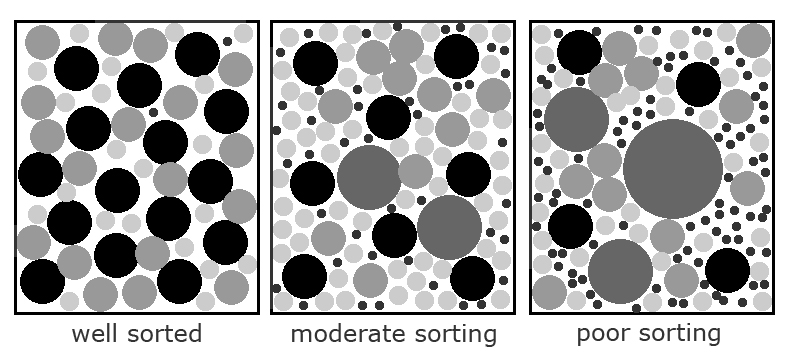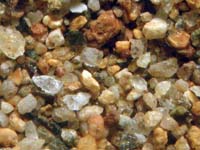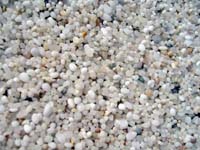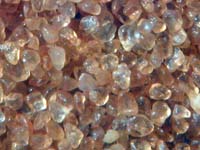6.14: Sorting
- Page ID
- 10231
Sorting
The ability of running water to move sediments also sorts particles by size and to a lesser degree by shape. This is called sorting (illustrated in Figure 6.52). Sediments exposed to longer transport or exposure to currents and waves tend to be more sorted by shape and size.
The amount of sorting depending on the energy conditions and amount of time at which the stream currents or ocean waves works on the particles. For instance, particles of the same mineral that are more rounded and more sorted have traveled farther.

As transportation distance increases, sediment becomes more "mature" and:
• Clay content decreases (clays are carried away and deposited in other quiet water settings)
• Sorting increases (gravel and sand gets concentrated)
• Non-quartz minerals decrease (quartz is both an abundant and is harder than other common minerals)
• Grains become more rounded (sharp edge break off easier)
The sediments sorting, roundness, and sphericity could act as a clue to following either modern or ancient alluvial rocks to their ultimate source (such as for finding gold and diamonds). For example, very well sorted and rounded materials may suggest a source from an older sedimentary rock rather than from freshly exposed igneous rocks. Sand from rivers and stream are very different from sands associated with beach and sand-dune deposits (see Figures 6-53 to 6-56).






